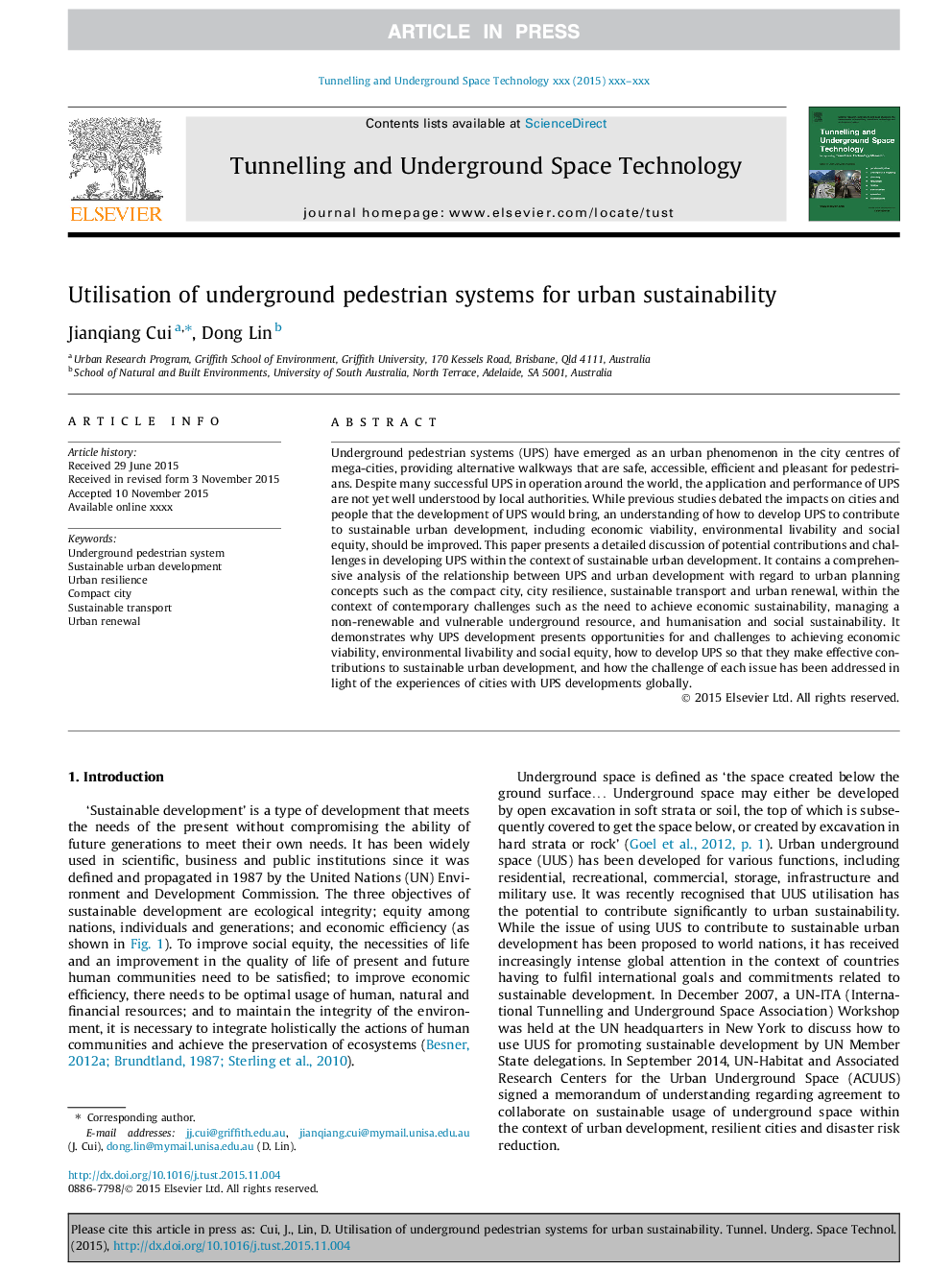| Article ID | Journal | Published Year | Pages | File Type |
|---|---|---|---|---|
| 6783618 | Tunnelling and Underground Space Technology | 2016 | 11 Pages |
Abstract
Underground pedestrian systems (UPS) have emerged as an urban phenomenon in the city centres of mega-cities, providing alternative walkways that are safe, accessible, efficient and pleasant for pedestrians. Despite many successful UPS in operation around the world, the application and performance of UPS are not yet well understood by local authorities. While previous studies debated the impacts on cities and people that the development of UPS would bring, an understanding of how to develop UPS to contribute to sustainable urban development, including economic viability, environmental livability and social equity, should be improved. This paper presents a detailed discussion of potential contributions and challenges in developing UPS within the context of sustainable urban development. It contains a comprehensive analysis of the relationship between UPS and urban development with regard to urban planning concepts such as the compact city, city resilience, sustainable transport and urban renewal, within the context of contemporary challenges such as the need to achieve economic sustainability, managing a non-renewable and vulnerable underground resource, and humanisation and social sustainability. It demonstrates why UPS development presents opportunities for and challenges to achieving economic viability, environmental livability and social equity, how to develop UPS so that they make effective contributions to sustainable urban development, and how the challenge of each issue has been addressed in light of the experiences of cities with UPS developments globally.
Keywords
Related Topics
Physical Sciences and Engineering
Earth and Planetary Sciences
Geotechnical Engineering and Engineering Geology
Authors
Jianqiang Cui, Dong Lin,
